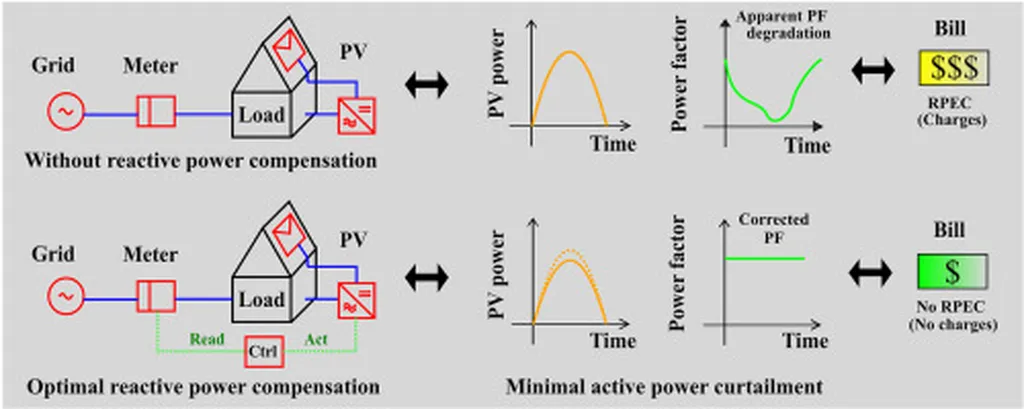As China’s distributed photovoltaic (PV) power generation systems continue to expand, a critical challenge has emerged that could significantly impact the energy sector’s efficiency and cost-effectiveness. A recent study published in the journal *Control and Intelligent Technology* (Kongzhi Yu Xinxi Jishu) sheds light on the deteriorating power factor issues in user-side grids connected to these distributed PV systems. The research, led by Liu Chongbo, offers a collaborative control solution that could reshape how we approach reactive power management in distributed energy systems.
The power factor, a measure of how effectively electrical power is being used, has been deteriorating beyond specified limits in user-side grids due to the integration of distributed PV systems. This issue, if left unaddressed, can lead to increased energy costs, reduced system efficiency, and potential penalties for non-compliance with grid standards. Liu Chongbo and his team delved into the system architecture and operational mechanisms of these PV systems, identifying key factors contributing to the power factor deterioration.
“Our analysis revealed that the operation of reactive power sources within these PV systems and the functioning of low-voltage reactive power compensation devices play crucial roles in the power factor issue at the division point of property for user-side grids,” explained Liu Chongbo. The division point of property, a critical junction in the grid, is where the responsibility for power quality shifts between the grid operator and the user. Ensuring compliance with power factor standards at this point is essential for maintaining grid stability and operational efficiency.
To address this challenge, the research team proposed a comprehensive collaborative control solution. This solution integrates the selection of the optimal connection point location with the optimization of the inverter reactive power operation mode. Additionally, the team suggested a series of supplementary measures, including the replacement of traditional devices with four-quadrant reactive power controllers, the transformation of the secondary circuit for reactive power control, and the addition of upper-level reactive power compensation devices.
The proposed solution not only addresses the power factor issue but also offers a low-cost, innovative approach to enhancing the overall performance of distributed PV systems. By improving the power factor, energy providers can reduce transmission losses, lower operational costs, and ensure compliance with grid standards, ultimately benefiting both the energy sector and end-users.
The implications of this research extend beyond immediate cost savings. As the world shifts towards renewable energy sources, understanding and managing the integration of distributed PV systems into existing grids becomes increasingly important. Liu Chongbo’s work provides a roadmap for future developments in reactive power management, paving the way for more efficient and reliable distributed energy systems.
“This research highlights the importance of collaborative control solutions in addressing the challenges posed by the integration of distributed PV systems,” said Liu Chongbo. “By optimizing reactive power management, we can enhance the overall performance of these systems and contribute to a more sustainable energy future.”
As the energy sector continues to evolve, the insights gained from this study will be invaluable in shaping policies, standards, and technologies that support the seamless integration of renewable energy sources into the grid. The collaborative control solution proposed by Liu Chongbo and his team offers a promising path forward, ensuring that the benefits of distributed PV systems can be fully realized while maintaining the stability and efficiency of the user-side grids.

